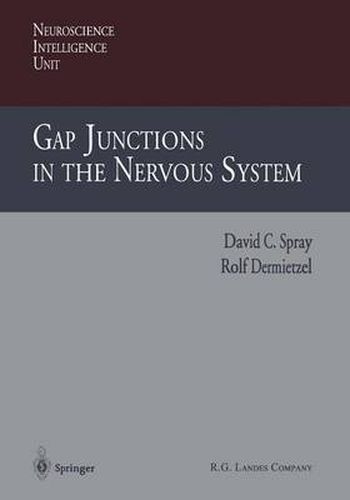Readings Newsletter
Become a Readings Member to make your shopping experience even easier.
Sign in or sign up for free!
You’re not far away from qualifying for FREE standard shipping within Australia
You’ve qualified for FREE standard shipping within Australia
The cart is loading…






This title is printed to order. This book may have been self-published. If so, we cannot guarantee the quality of the content. In the main most books will have gone through the editing process however some may not. We therefore suggest that you be aware of this before ordering this book. If in doubt check either the author or publisher’s details as we are unable to accept any returns unless they are faulty. Please contact us if you have any questions.
A Cytoplasm Connexon or Hemichannel Cytoplasm external loop I - P. M. N-Termlnus Fig. 1. 1. Topology of gap junction channels. (A) Cap junction channels, extending from the cytoplasm of one cell to the cytoplasm of another, are formed by two connexons or hemichannels connected across extracellular space. (B) Each connexon is formed from six connexin subunits, each having four membrane-spanning domains and both amino and carboxyl termini within the cytoplasm. External/oops (I and II} are believed to provide the high affinity interactions between the hemichannels. 4 Gap }unctions in the Nervous System P-region of voltage sensitive nonjunctional molecules; these contributed disulfide 9 channels. And Delmar’s group has ob- bridges are presumably involved in intra- tained evidence that intracellular acidifi- connexin and inter-EL loop tertiary struc- cation may result in a conformational ture. An old observation that should be change analogous to the ball and chain repeated stoichiometrically with modern techniques is that gap junction channels model of inactivation of voltage gated ionic can be split into connexons or hemi- channels, whereby the carboxyl terminal channels using hyperosmotic disaccharide portion of connexin43 binds to CL, closing 23 solutions again implying that linkage is the channel. Higher order structure of the channel not covalent. is believed to consist of six connexins form- ing the hemichannel or connexon in a 3.
$9.00 standard shipping within Australia
FREE standard shipping within Australia for orders over $100.00
Express & International shipping calculated at checkout
This title is printed to order. This book may have been self-published. If so, we cannot guarantee the quality of the content. In the main most books will have gone through the editing process however some may not. We therefore suggest that you be aware of this before ordering this book. If in doubt check either the author or publisher’s details as we are unable to accept any returns unless they are faulty. Please contact us if you have any questions.
A Cytoplasm Connexon or Hemichannel Cytoplasm external loop I - P. M. N-Termlnus Fig. 1. 1. Topology of gap junction channels. (A) Cap junction channels, extending from the cytoplasm of one cell to the cytoplasm of another, are formed by two connexons or hemichannels connected across extracellular space. (B) Each connexon is formed from six connexin subunits, each having four membrane-spanning domains and both amino and carboxyl termini within the cytoplasm. External/oops (I and II} are believed to provide the high affinity interactions between the hemichannels. 4 Gap }unctions in the Nervous System P-region of voltage sensitive nonjunctional molecules; these contributed disulfide 9 channels. And Delmar’s group has ob- bridges are presumably involved in intra- tained evidence that intracellular acidifi- connexin and inter-EL loop tertiary struc- cation may result in a conformational ture. An old observation that should be change analogous to the ball and chain repeated stoichiometrically with modern techniques is that gap junction channels model of inactivation of voltage gated ionic can be split into connexons or hemi- channels, whereby the carboxyl terminal channels using hyperosmotic disaccharide portion of connexin43 binds to CL, closing 23 solutions again implying that linkage is the channel. Higher order structure of the channel not covalent. is believed to consist of six connexins form- ing the hemichannel or connexon in a 3.